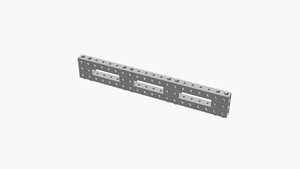Trusses: Difference between revisions
From
No edit summary |
No edit summary |
||
| Line 3: | Line 3: | ||
|designer = Phil and RJ Jergenson | |designer = Phil and RJ Jergenson | ||
|date = | |date = | ||
|vitamins = | |||
|materials = | |||
|transformations = | |||
|lifecycles = | |||
|parts = [[Frames]], [[Nuts]], [[Bolts]], [[End caps]] | |parts = [[Frames]], [[Nuts]], [[Bolts]], [[End caps]] | ||
|techniques = [[Bolting]], [[Triangles]] | |techniques = [[Bolting]], [[Triangles]] | ||
Revision as of 03:37, 25 May 2021
Technique: Trusses
| Tools: | Wrenches |
|---|---|
| Parts: | Frames, Nuts, Bolts, End caps |
| Techniques: | Bolting, Triangles |
Introduction
A truss consists of frames connected at joints. Trusses are typically composed of triangles because of the structural stability of that shape and design.
Challenges
A triangle is the simplest geometric figure that will not change shape when the lengths of the sides are fixed. In comparison, both the angles and the lengths of a four-sided figure must be fixed for it to retain its shape.
Approaches
-
Simple truss
-
Truss with spacers or stacked washers
-
Truss with tri joints



